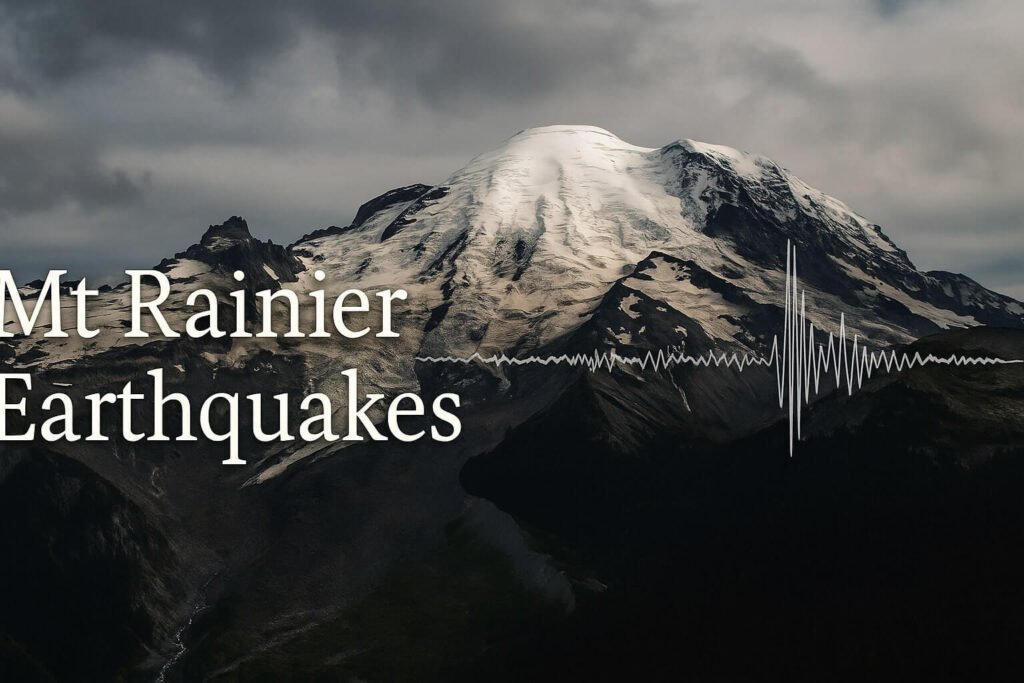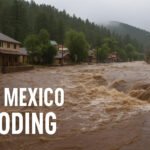Mount Rainier has stirred again. In early July 2025, more than 400 small earthquakes shook beneath the volcano’s summit in a swarm that caught the attention of scientists and residents alike. These weren’t the kind of quakes that knock pictures off walls or crack driveways, but they were enough to light up the Pacific Northwest Seismic Network and remind everyone that this majestic, ice-capped mountain is more than just a scenic backdrop. It’s alive, and it talks in tremors.
This recent episode is part of a pattern. Mt Rainier earthquakes are not new, but what makes them important is where, how often, and why they happen. Every tremor is a whisper from inside the volcano. Whether it’s pressure from shifting rock, fluid sneaking through fractures, or tiny slips under glacier ice, each signal carries clues about the mountain’s state of health. And when a cluster like this summer’s rolls in, researchers listen closely.
A Swarm That Stands Out
Between July 2 and July 6, 2025, seismometers picked up over 400 quakes beneath Rainier’s summit, most of them so small they wouldn’t even rattle a windowpane. The biggest measured just 1.7 magnitude. But it’s not the size that makes this interesting. It’s the pattern. Several quakes per minute were recorded during the peak hours of the swarm, echoing a similar event in 2009, when more than 1,000 microquakes struck in just a few days.
These types of quakes are called volcano-tectonic. They’re sharp, high-frequency cracks, like brittle rock snapping under pressure. They usually occur one to four miles beneath the surface. They don’t signal magma rising or an eruption brewing, but they do show that something is moving inside the mountain. Often, it’s water or volcanic gas forcing its way into small fractures and pushing them apart. In essence, the mountain is venting stress.
In 2025, scientists didn’t see any other signs of trouble. There was no uplift of the ground. No changes in gas coming from summit vents. No heat signals or deformation on satellite radar. The alert level stayed at “Normal.” Still, the sheer number of mt rainier earthquakes made this the most active period in over 15 years.
Not Just Rock: Ice Can Quake Too
It’s easy to forget that Mt Rainier wears glaciers year-round. Ice flows down from its flanks, grinding against the mountain and sometimes slipping in sudden jolts. These are called glacier quakes, and they look different on seismographs. They’re more rhythmic, often repeating at regular intervals. In 2010, thousands of these stick-slip events were recorded in just a few weeks.
What’s fascinating is that ice, water, and rock all interact inside and around the mountain. Snowmelt seeps into hot rock. Pressurized gas rises through ancient lava tubes. Fractures fill and crackle. Mt Rainier earthquakes are often a blend of these processes. When you look at the raw data, it’s not just about faults or magma. It’s a symphony of shifting elements, many of them happening just beneath the summit.
Why It Matters for the People Below
Rainier isn’t the most active volcano in the Cascades, but it might be the most dangerous. The reason isn’t lava. It’s mud.
When hot rock or a landslide hits one of Rainier’s many glaciers, the ice can melt rapidly and mix with loose volcanic material to form a lahar—a fast-moving mudflow that behaves like wet concrete. Lahars can race down river valleys at freeway speeds, swallowing forests, roads, and towns in their path. In the past, these flows reached places like Orting, Puyallup, and Sumner. Entire communities now sit on ancient debris fans.
This is why every Mt Rainier earthquake, especially those under the summit, gets close attention. A large quake could trigger a landslide or shake loose hydrothermal material. That’s why the Rainier Lahar Detection System exists, with geophones, sirens, and warning towers stretching along river valleys. In 2025, no such events occurred, but the system was on alert as the swarm unfolded.
Even though the July swarm stayed quiet on the surface, it prompted renewed interest in preparedness. Emergency management agencies held briefings, schools in hazard zones revisited their evacuation routes, and local news helped remind residents why the mountain’s signals matter. It wasn’t a false alarm. It was a real-time drill in watching, listening, and staying ready.
What Scientists Are Watching Next
Mt Rainier is one of the most heavily monitored volcanoes in the United States. Seismometers, GPS units, gas sensors, and satellite radar all keep an eye on its every move. Researchers now use machine learning to detect patterns in quake swarms and separate glacier quakes from volcanic ones. Some are testing AI models to forecast how swarms evolve. Others are focusing on long-period tremors deep below the surface—signs that magma might still be bubbling far below.
In late 2023, a few of those deep low-frequency signals showed up under Rainier, about 20 to 40 km down. They were small, but they reminded everyone that magma still exists beneath this mountain. It’s not climbing toward the surface now, but it hasn’t gone away.
At the same time, new stations are being added to Rainier’s southern and western flanks. These fill gaps in seismic coverage and help scientists pinpoint exactly where future swarms begin. Each new quake adds to a growing body of knowledge, making future alerts more accurate and more timely.
The U.S. Geological Survey has also stressed the importance of public awareness. Knowing your lahar zone, being able to get to high ground quickly, and signing up for alerts are all key steps. The goal isn’t to fear the mountain. It’s to live with it wisely.
Mt Rainier earthquakes aren’t just random noise. They’re part of an ongoing conversation between Earth’s crust, its deep fluids, and the glacier-cloaked summit that watches silently over Washington. The July 2025 swarm didn’t mean an eruption. It didn’t mean disaster. But it did mean movement, and with movement comes meaning.
Scientists will keep listening. Residents will keep preparing. And the mountain will keep murmuring in its own time.


